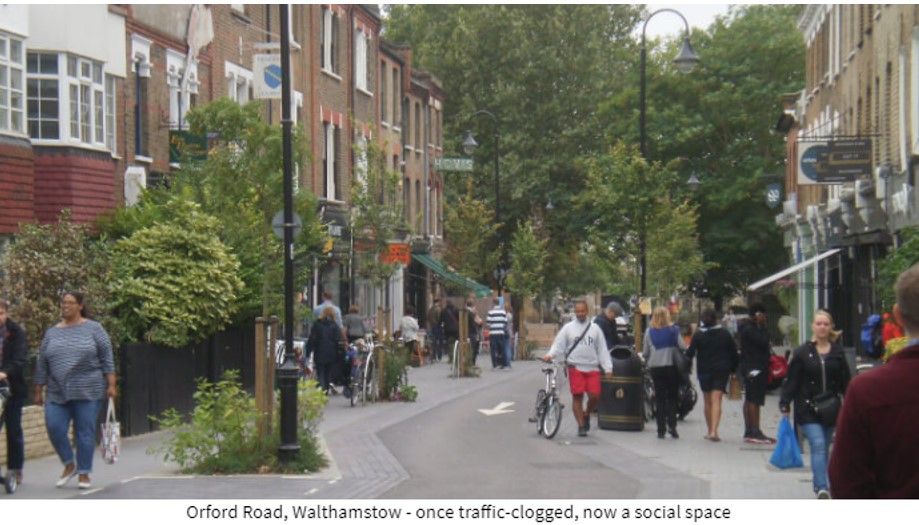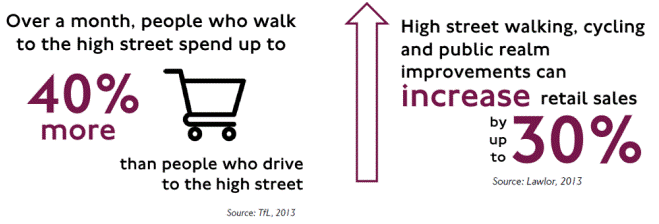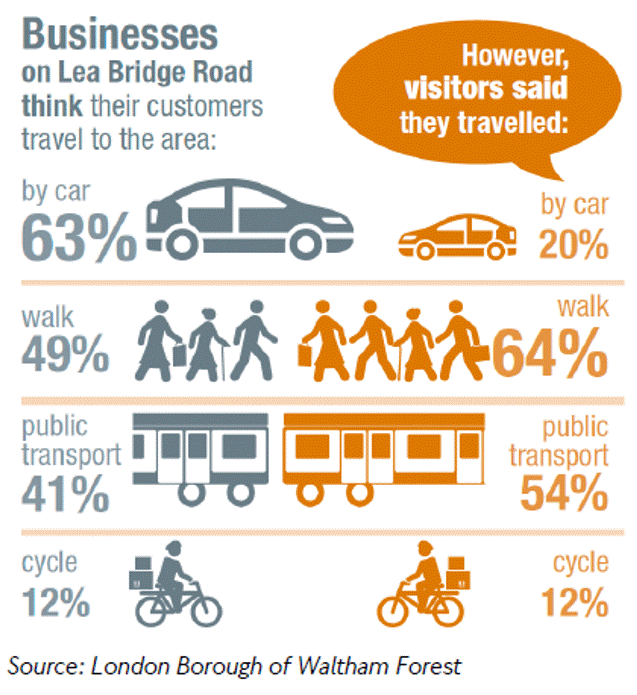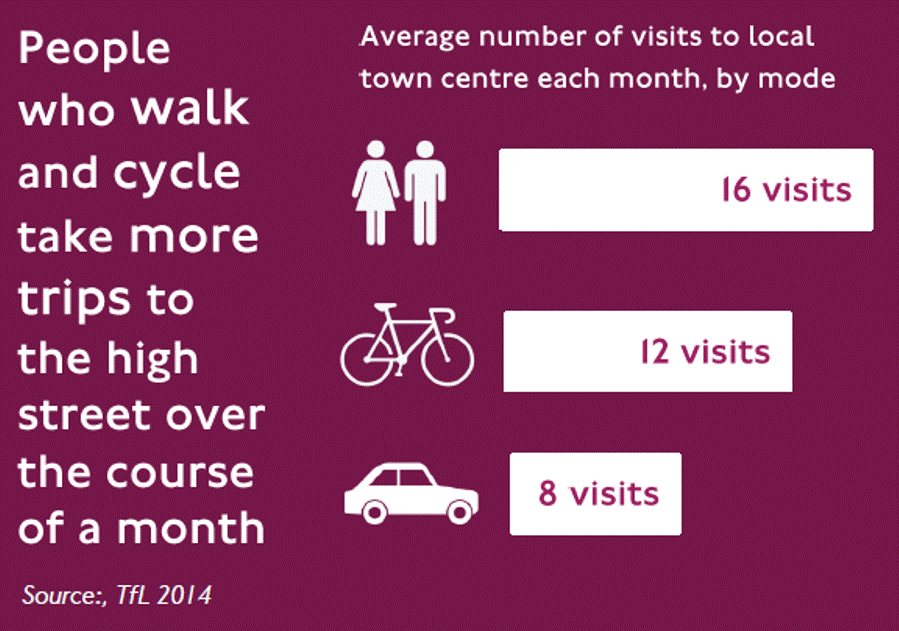I own a local business...
It’s far more convenient to shop locally, so we want local Headington businesses to thrive. If you run a local business we’d like to hear from you.
We need your early input to discuss how LTNs should be implemented in Headington – please join our mailing list and look out for updates about upcoming public events.

Lockdown saw an uptick in people shopping at local businesses [10]. Headington Liveable Streets is determined to see this trend continue over the long term. Thriving local businesses are what our community needs and LTNs implemented elsewhere have been shown to benefit residents and businesses alike.
Can my customers still drive to my shop?
Cars and delivery vehicles can still access every part of the road network as they do now. Creating LTNs only restricts through-traffic.
People will still be able to drive to the shops as before if they choose to. But, did you know that studies in the UK and around the world have shown that implementing pedestrian and bike-friendly measures results in increased footfall and trade and more vibrant economies?
Economic benefits of walking and cycling
Did you know that shoppers arriving on foot and by cycle make more trips to the high street and spend more over the course of a month than people arriving by car?
There’s lot of evidence to suggest that improving public spaces around high streets and making them more easily accessible for people arriving on foot or by cycle increases retail sales and lowers shop vacancy rates, boosting an area’s economic vibrancy. Here are some headline findings...
Increased trade
Shoppers arriving on foot spend more than people arriving by car:
- Pedestrians in Canada and New Zealand spent up to six-times more than people arriving by car
- Walkers in London spent £147 more per month than those travelling by car

Economic viability and vibrancy
- Decline in retail vacancies following investment in walking and cycling on high streets and in town centres and other shopping areas in London
- In the Waltham Forest Mini-Holland scheme more businesses have opened, leading to increased economic and employment opportunities
- Every £1 spent on walking and cycling produces £13 of benefit to the economy

Businesses overestimate how many customers arrive by car
Most people walk, bus or cycle to their local shops:
- A survey in Waltham Forest revealed that many more people walk, use public transport or cycle than drive
- Many local shops have reported a surge in business during lockdown [70]
Absence of customers arriving by car is more than compensated for by people arriving on foot or by bike:
A temporary ‘parklet’ in Shoreditch – which turned a space normally occupied by two cars into seating for 14 people and 8 cycle parking spaces – increased the adjacent shop’s takings by 20%.

Infographics from TfL, ‘Walking and cycling: the economic benefits’ Summary Pack; research findings from TfL, ‘Walking and cycling: the economic benefits’ Summary Pack; TfL, ‘Street Appeal’ and Liveable Streets, ‘The Pedestrian Pound’ – see those publications for research study citations
